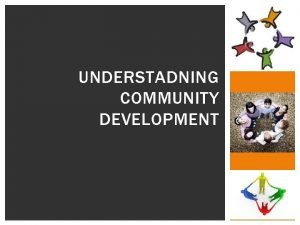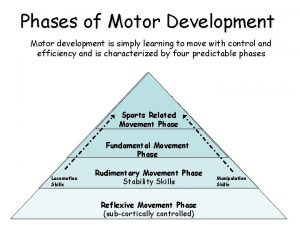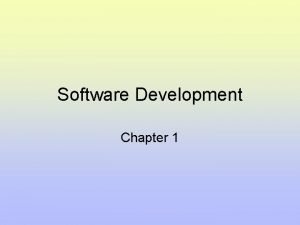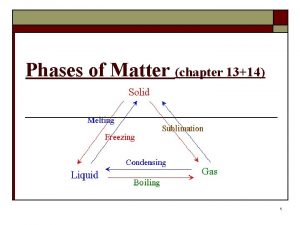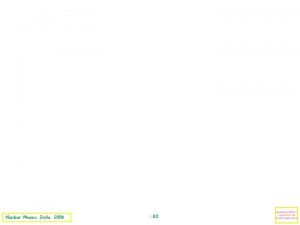Chapter 3 International Expansion Strategies International development phases











- Slides: 11

Chapter 3 International Expansion Strategies

International development phases • Phase 1: Initial market entry • Phase 2: Local market expansion • Phase 3: Globalization

Choosing which markets to enter Opportunities and threats are assessed at two different levels: • General business climate of a country • Specific product market

Country/Market Choice • Market information • Competitor information • Internal information

Market information • Market potential: measure current demand, forecast future growth, new product launches… • Market access: “openness”, cost and delays, legal and customs obstacles, marketing infrastructure (distribution channels, ad agencies, etc…)… • Market receptiveness: perception of firm, “made in” effect of country of origin… • Market stability: economic, legal, political, cultural risks…

Competitor information • Who are the competitors? – Inventory of competition – Direct/indirect – Local/global How many? – Market share?

Internal Information • Production capacities: product adaptation, quality control, packing, stocking, transport… • Marketing and sales situation: current strategy, distribution channels, brand image, quality advantages, relationships… • General strategic situation: situation in domestic market, new product development, innovation, competitive advantage… • Business goals: short term and long term goals • Financial resources: costs of canvassing, capital budgeting orientation, available cash, export subsidies… • Human resources: staff and management motivation, availability, training required, expatriates… Internal export audit, “diagnostic export”

Criteria for ranking export markets • General attractiveness of the market • Competitive advantage • Risk • Global strategic importance • Possible synergies Market-Portfolio Matrix

Market-Portfolio Matrix High INVEST Country Attractiveness SELECTIVITY DIVEST Low Internal strengths High

Market selection strategies (Ayal and Zif) Choice of target markets is based on two different alternatives: • Market penetration (concentration) vs. market skimming (diversification): a limited number of markets or large number of markets – Market penetration: rather low expansion rate in a few markets for intensive development. The goal is to obtain high market share in each country before expanding into others. – Market skimming: high rate of return while maintaining a low level of resource commitment. The firm selects more easily available market targets while minimizing risk and investment. • Segment penetration (concentration) vs. segment skimming (diversification): similar or dissimilar market segments – Segment penetration: focus on a small number of segments in which the firms seeks a dominant position – Segment skimming: brand product diversity, specific launches for some markets

Timing of entry Simultaneous entry vs. sequential entry • Simultaneous entry: preempt competition be establishing presences in all major markets, limit opportunities for imitation, potential scale economies may lead to lower unit costs • Sequential entry: build on knowledge and experience, generally preferred if substantial financial, managerial or other resources are required
 What are the steps in community development process
What are the steps in community development process Phases of writing development
Phases of writing development Phases and stages of motor development
Phases and stages of motor development Phase of system development life cycle
Phase of system development life cycle Phases of curriculum development
Phases of curriculum development Gallahue hourglass model
Gallahue hourglass model Phases of edlc
Phases of edlc Startup development phases
Startup development phases 5 phases of software development
5 phases of software development Phases of leadership development
Phases of leadership development Kendall and kendall
Kendall and kendall F
F
